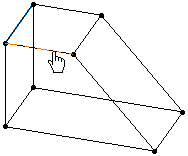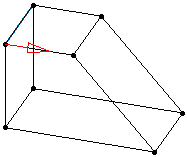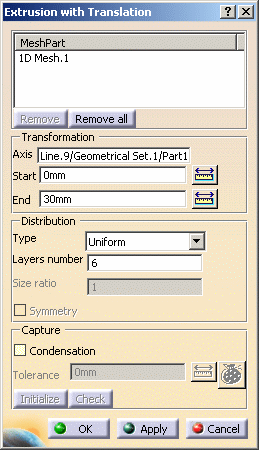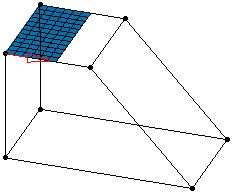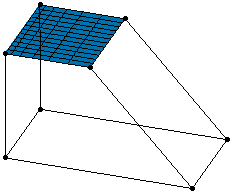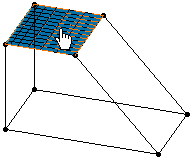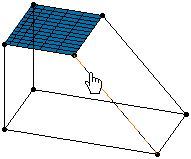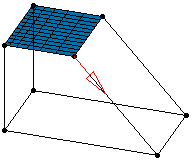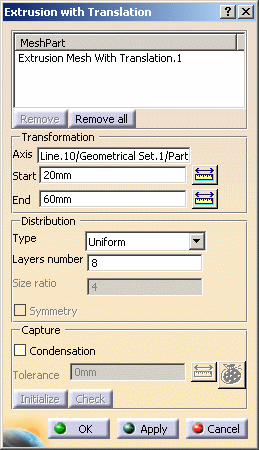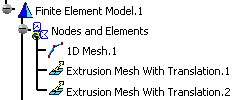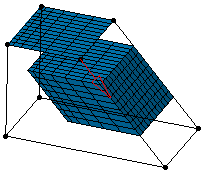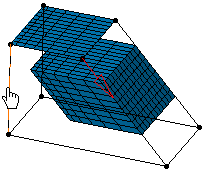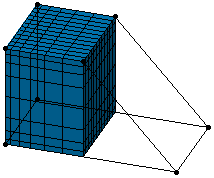|
The Extrusion with Translation dialog box appears.
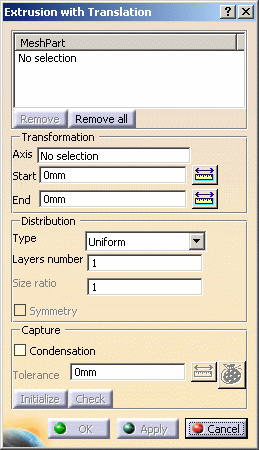
- Mesh Part: lets you specify the mesh part to
extrude.
 |
Multi-selection of mesh parts is available. |
- Remove: lets you remove a selected mesh part from
the Mesh Part field.
- Remove all: lets you remove all the selected mesh
parts from the Mesh Part field.
- Transformation:
- Axis: lets you specify the direction of the
extrusion.
 |
A red arrow appears as soon as you have selected
the extrusion Axis. |
- Start: lets you specify the start value of the
extrusion.
- End: lets you specify the end value of the
extrusion.
 |
You can enter a negative value in the
Start and End fields.
|
- Distribution:
- Type: lets you choose the node distribution type.
- Uniform: the distance between all the
distributed nodes will be the same.
- Arithmetic: the distance between the distributed
nodes will be defined by an arithmetical distribution.
- Geometric: the distance between the distributed
nodes will be defined by a geometrical distribution.
- Layers number: lets you specify the number of
layers you want.
 |
Note that this value determines the mesh
size.
For example, if the distribution is uniform, the extrusion
length value is 30mm and the
Layers number value is 6, the mesh size
value will be : 30mm / 6 = 5mm. |
- Size ratio: lets you specify the common difference
value for an Arithmetic distribution or the common
ratio value for a Geometric distribution.
 |
This option is only available if you selected
Arithmetic or Geometric as
Distribution Type option. |
- Symmetry: lets you specify if the distribution
should be symmetric or not.
 |
This option is only available if you selected
Arithmetic or Geometric as
Distribution Type option. |
- Capture: a node
capture is automatically done between the parent mesh part and the
extruded mesh part on the condition the Start field is
equal to 0mm.
In other words, if the Start field is equal to 0mm,
the parent mesh part and the extruded mesh part share the same
nodes.
- Condensation: if selected, this option lets you
condense nodes of the extruded mesh part and updated neighboring
mesh parts using a tolerance value.
- Tolerance: lets you specify the tolerance value
of condensation (only available with the Condensation
option).
 |
|
|
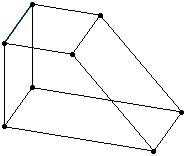
 in the Mesh Transformations toolbar.
in the Mesh Transformations toolbar.
